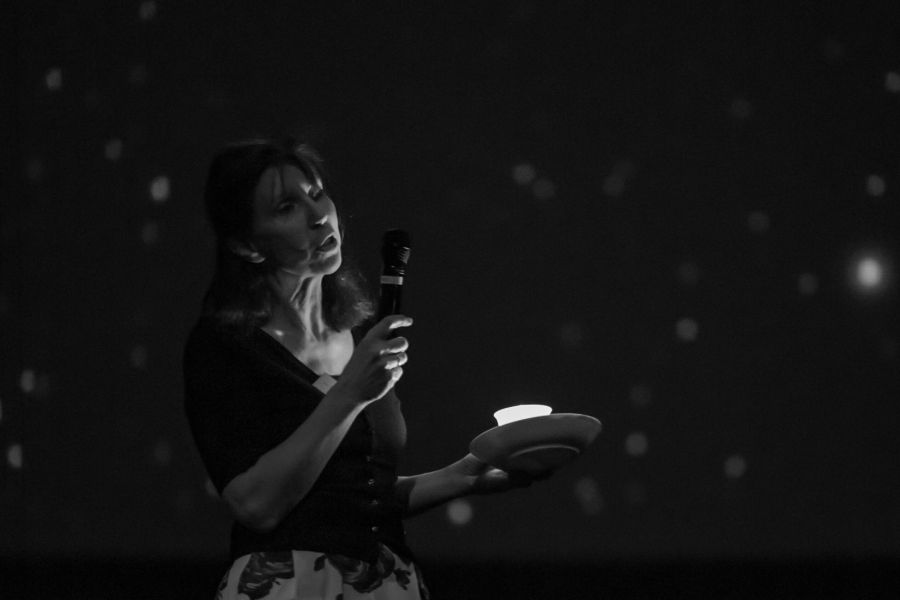BioClock has started!

Last Thursday, April 21st, we celebrated the official start of BioClock with our kickoff event! After delaying the original meeting, we welcomed over 80 participants of the consortium on a great spring day. ARTIS Amsterdam Royal Zoo was the host of our event which allowed us to use great venues. In the dome of the Planetarium, attendees experienced a real dark night and with a sky full of stars. Milo Grootjen, head of the Planetarium, emphasized that we, unfortunately, rarely experience this since the light pollution is severe in the Netherlands. This light pollution is even visible from space and although the ‘invisibility’ of stars is a problem for astronomers, light pollution causes many more problems.
With increasing illumination of the room, Joke Meijer, professor neurophysiology at the Leiden University Medical Center and coordinator of BioClock, presented the disruptions of the biological clock of humans and animals caused by light pollution. The biological clock is an ancient mechanism and present in all living organisms serving important functions in physiology. Lights on streets and buildings, in gardens and children bedrooms seem innocent and useful, but are disturbing us and nature.
“For just a few euros you can decorate your garden with lights, but you will destroy biodiversity in your garden”, said Joke Meijer, BioClock coordinator.

The goal of BioClock is to investigate how we can keep the biological clock healthy in our modern society. Twenty-five PhD candidates and post doc researchers in three clusters study the role of the clock in society (cluster 1), health care (cluster 2) and nature (cluster 3). Day chair Malou van Hintum held interviews with project leaders to present the consortium. This sneak preview of the projects is representative for the diversity of projects and target groups which are aimed for within BioClock. For instance, Linda van Kerkhof (RIVM and Erasmus MC) and Joëlle Oosterman (TNO) work on personalized interventions for shift workers, whereas Raymond Noordam (LUMC) studies how the timing of activity can positively contribute to growing older healthily. Niki Antypa (Leiden University) focusses on students; a highly vulnerable group to develop mental health problems. Mental health issues are a large societal problem and are often accompanied by circadian disruptions. Therefore, the team of Niki develops an intervention based on sleep and biological rhythms.

Knowledge on the biological clock can also contribute to improve health care. That is why Jeroen Dudink (UMC Utrecht) wants to adjust the organization of the NICU department to improve the circadian rhythms of newborns, which may contribute to their recovery and growth. Laura Heitman (Leiden University) searches for targets in the circadian system to design new drugs, whereas Laura Kervezee (LUMC, co-coordinator of BioClock) investigates how treatments, such as vaccinations, can be optimized based on time of day. Ines Chaves (Erasmus MC) wants to create rhythms in breast milk to support babies, while Emma Visser (TU Eindhoven) wants to optimize light therapy for patients with depression. These are just several examples of how the clock can be used in health care.

Consequences of human behavior are visible in nature, including light pollution; the theme of Cluster 3. Kamiel Spoelstra (NIOO Wageningen), Astrid Groot (University of Amsterdam) and Martina Vijver (Leiden University) investigate several components of a complete food web; plants, insects and small mammals are all included. Those elements need each other and if one of them is affected by light pollution, it may cause large consequences for the complete food web. This urgent risk for biodiversity is also felt by municipalities whom are an essential component of BioClock. Amongst others, the municipality of Rotterdam wants to take action to protect biodiversity in their cities but needs science for this, said Olaf van Velthuijsen, ecologist in Rotterdam. This collaboration between municipalities and science is unique in the Netherlands and perhaps worldwide. Ultimately, Roelof Hut (University of Groningen) wants to design lighting that does not disturb the biological clock, because that would be a great solution to many societal and ecological challenges.


These and other projects will start and develop in the coming 6 years. The awareness of the importance of the biological clock is growing, which will be further stimulated by educational BioClock projects at Technolab Leiden and the Amsterdam University of Applied Sciences. Marijke Gordijn (Chrono@Work and University of Groningen) was spot on: “BioClock includes both fundamental and applied research in all aspects of life, and this is just the beginning. Knowledge on the biological clock can be used very widespread and that is what BioClock represents.” Attendees moved to the Noord Paviljoen in ARTIS after this morning session in the Planetarium to meet up and enjoy their lunch.


Several PhD candidates and post doc researchers, the BioClock trainees, presented their plans and first results during the afternoon program for academic partners. This was a great preview to our next meeting in November which will contain more content of projects. We are much looking forward to it!


Photography by Hans van Kooten.

The BioClock Consortium is funded by the NWA-ORC programme of the Dutch Research Council (NWO; project number 1292.19.077).